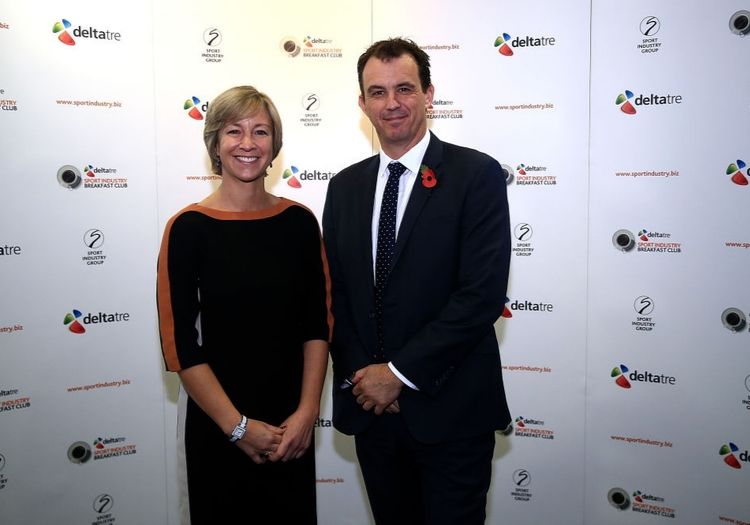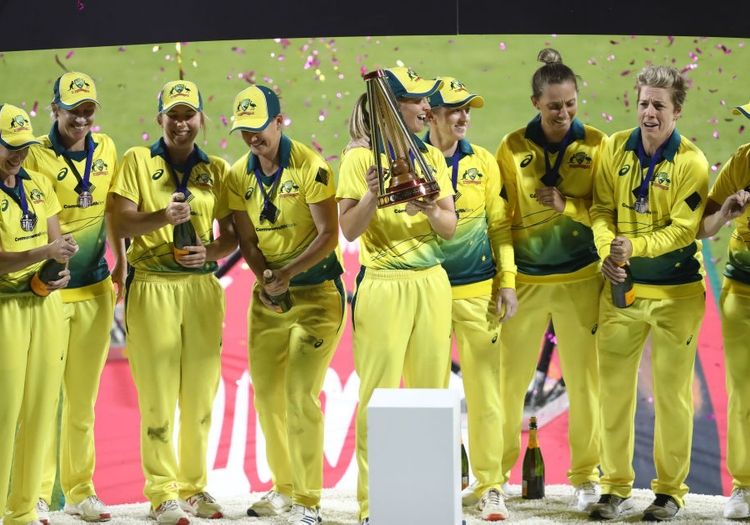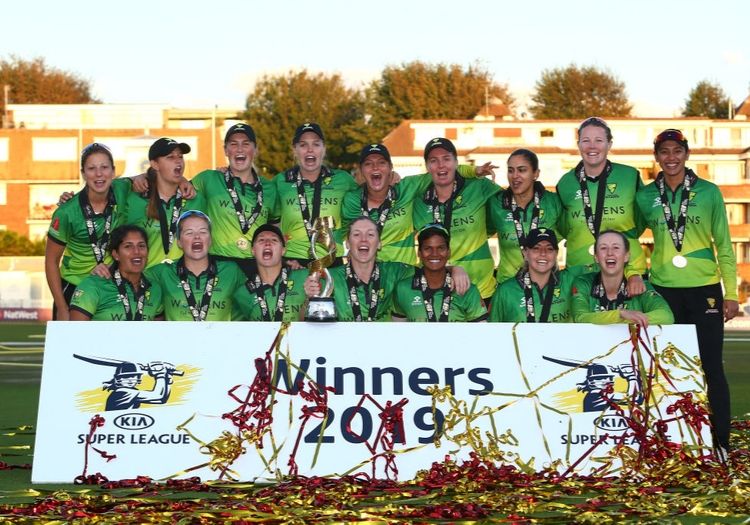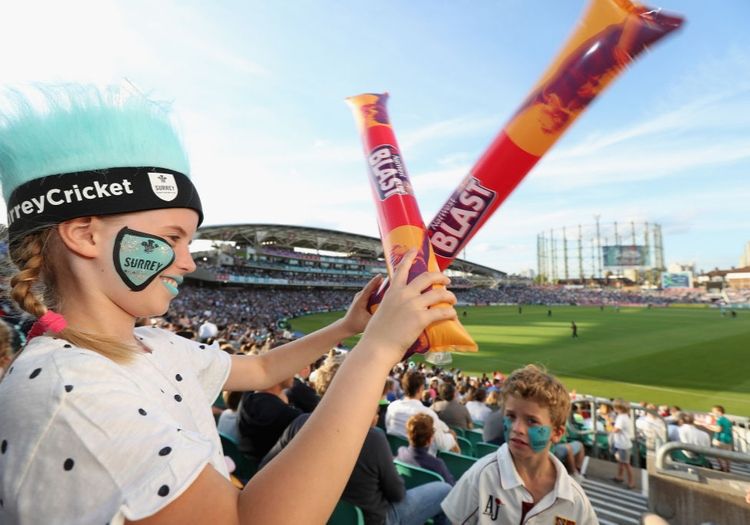SAM MORSHEAD: Much of the £20milllion that is coming into the women’s and girls’ game in 2020 and 2021 is filtering into the lower reaches, and the ECB were at pains to emphasise this throughout

Smart, professional and well thought-through, if the ECB’s grand plan for women’s and girls’ cricket in England and Wales lives up to the promises of its launch event, the sport in this country has a bright future.
The ECB revealed their blueprint for the game on Tuesday at a private members’ club in Covent Garden, where the governing body’s hierarchy mingled with prominent figures in women’s sport and invited media.
The event was slick - on this occasion, unlike the recent unveiling of The Hundred’s team brands, an outside PR agency was brought in to assist in the staging - and it clearly outlined the ECB’s ideas for women’s and girls’ cricket over the coming five years.
There were presentations involving senior figures - managing director of women’s cricket Clare Connor, ECB chief operating officer David Mahoney, Sussex chief executive Rob Andrew and England captain Heather Knight - but the theme of the afternoon was one of universal inclusivity.
Much of the £20milllion that is coming into the women’s and girls’ game in 2020 and 2021 is filtering into the lower reaches of the game, and the ECB were at pains to emphasise this throughout.
A total of £8million will be available to clubs for investment in facilities - small grants schemes will help dole out the cash - and a further £2million will head to the county development pathways around the country, allowing funding in age group county cricket to increase by 171 per cent.
VISIT THE WOMEN'S CRICKET HUB
Another £1million per year has been set aside for what Connor described as a “new workforce of club development officers”, who will help get clubs up to speed with what is required to run a successful and sustainable female section.
The ECB see their five-point plan for growing the women’s and girls’ game as a “virtuous circle”, and while that might initially sound like the musings of Siobhan Sharpe, the vacuous public relations goof in the BBC comedy W1A, after listening and reading deeper into the plan it starts to make sense.
‘Participation’ covers initiatives to encourage youngsters to take up the game, such as All Stars Cricket and Chance to Shine, and carries through to the club game. A particular emphasis will be made on attracting more female South Asian coaches and mentors - the ECB target is for 2,000 All Stars Activators to be trained by 2024.
‘Pathway’ includes age-group county development, leading into the ‘performance’ element - the new eight-hub regional structure which will effectively replace county cricket at senior level.
‘Profile’ covers the reach of The Hundred - the new face of domestic women’s cricket in England and Wales - and England’s international fixtures, which are meant to inspire children to participate. And so on, and so forth.
Sitting above these is a fifth initiative - ‘people’ - which is designed to encourage more representation of women in positions of power, from club committees to major bodies.
Six per cent of qualified coaches are female and just two per cent of umpires, according to ECB data, while only two of the 18 first-class counties have female chief executives. The initial £20million investment, which is currently intended to rise to £50million over five years, is intended to change the status quo.
It is relevant and important work that needs undertaking, and while some of the ECB’s other recent ventures appear to have ignored its base, the women’s and girls’ action plan plays to it.
It is a far cry from The Hundred. In that instance, the market research conducted remains somewhat vague and clearly contentious, but the ECB have been a lot more specific in explaining the demographics which informed their women’s action plan.

The restructure will attempt to bridge the gap to Australia's successful women's cricket strategy
A two-year process involved a survey of 6,300 women at recreational level, while there were 1,700 female respondents to the ECB’s annual National Cricket Playing Survey.
The counties have been heavily consulted - Connor and her team have spoken with the vast majority on at least three occasions - and largely their queries, concerns and suggestions have been listened to. It was the counties’ preference, for example, that there should be 40 full-time salaries made available to domestic players rather than 100 at semi-pro level.
The counties will also enjoy plenty of responsibility when it comes to the eight regional centres of excellence which will form the tier below the elite standard of international and The Hundred from 2020 - clusters of local boards will work together, and receive funding to help them develop distinct pathways for players.
There remains pay disparity as compared to the men - the top earners in the women’s Hundred will earn £15,000, half the lowest band in the men’s version, for example - but the message from the ECB is that this is only the beginning.
Connor declined to reveal the specific values of the 40 new domestic contracts in the female game, but any payments received by players for participation in The Hundred will be in addition to their usual wage.
They will become year-round, full-time cricketers - commercial and charitable appearances will be built into their deals - and they will be paid at a level that falls in line with the PCA’s recommendations for young male players.
The players’ union guidelines, which expire at the end of 2019, are currently £17,897 for 18-year-olds rising to £25,354 for 24-year-olds. These details will be revised for the 2020 campaign as part of the new County Partnership. The PCA say discussions with the ECB regarding remuneration in the women’s game are “positive but ongoing”.

Western Storm won the last Kia Super League this summer
Combined with their Hundred payments, Connor said that this new group of development pros will be earning roughly the same as “the lowest-paid centrally contracted players”.
“The feedback was it would be better to have a smaller number of full-time pros, who aren’t trying to juggle full-time education or part time jobs,” she said.
“It’s a start point, not an end point. To have a group of pros under the centrally contracted group, who are full-time cricketers is more powerful, for example, than having another 80 or so who are very part-time, earning a very part-time wage.
“I’m very comfortable with where we are. I think it gives us a pool of players who should really be pushing much harder for England places than a large number of central players would.”
The majority of the playing time for these 40 new pros will come in the period between May and September, and over the winter - in addition to training - they will be engaged in public appearances, coaching sessions and other cricketing initiatives as part of the terms of their contracts.
They will be made up of fringe England players, such as Middlesex’s Sophia Dunkley - who was present at the launch event on Tuesday, members of the national academy and other talented players on the county circuit.
The make-up of the eight regions has been decided and by the end of November a lead county for each is expected to be named. That county will act as the administrative hub of the centre of excellence.
It might not even be a county, too, as there is a chance that Loughborough University, following their formidable contribution to the Kia Super League, could take on the East Midlands section. MCC, meanwhile, may well play a part in London and the east.
“It would be completely foolish and not in line with transforming women’s and girls’ cricket to exclude Loughborough,” Connor said.
There are regions where only a handful of counties might make up the regional hub - Yorkshire and Durham, for example - while in London and the east there will be nine in total: Middlesex, Essex, Northamptonshire and six National Counties.

How many girls watch professional cricket is among the metrics the ECB are focused on
Each cluster of counties will need to appoint around a dozen new members of staff, including a regional director of women’s cricket - a role which cannot be combined with any other within the game, underlining the ECB’s coherent thinking when it comes to their women’s and girls’ strategy.
Figures from the ECB will sit on the recruitment panel for each of the eight regional director of cricket appointments, with all of the positions funded centrally. They will also have a major say in the allocation of the new contracts.
The revamp of the domestic structure is a stage-by-stage process.
The regional hubs, for instance, will not compete in T20 cricket in 2020 - instead the county T20 competition will take place in early summer, followed by The Hundred, prior to the introduction of the new 50-over tournament in August and September.
It is unlikely that everything will be in place for the new structure until March, at which point the 40 new contracts can be handed out. It might be that the eight regional hubs do not have their five new pros until June. So the timeframe does not lend itself to positive PR.
Furthermore, there are concerns among players in women’s county cricket that the introduction of the new regional hubs will lead to a lack of opportunities to play good quality representative cricket.
With 38 counties effectively merging into centre centres, the number of games on offer may well drop, though some bilateral county matches will still take place.
The ECB believe, though, that without the restructuring, the English game would only fall further behind Australia, who have come to dominate the international arena to such an extent that it would not be too unfair to suggest that their most competitive fixture at present is against Australia A.
And their case is well-argued, clear, concise and accessible.
After all the bluster and fluster of The Hundred, this particular launch benefited from clarity and conviction. Now the action plan itself must follow suit.
Posted by Stewart Francis on 03/07/2020 at 15:16
Interesting article. Does anyone know what the names and composition are of the eight regions?